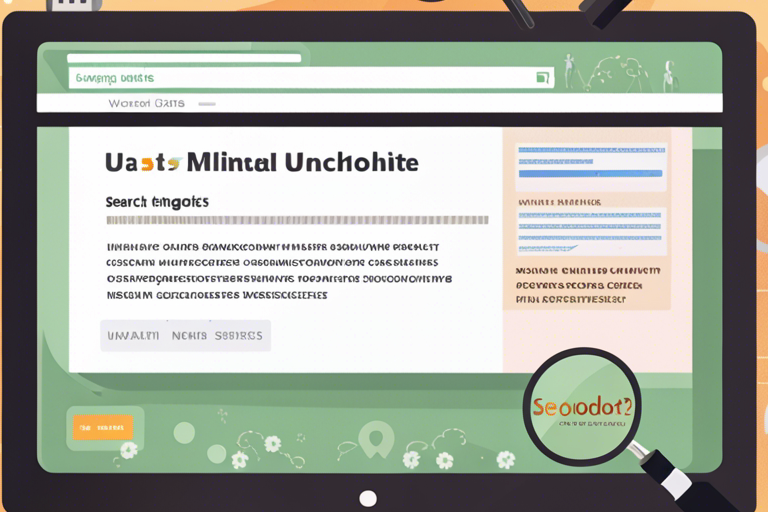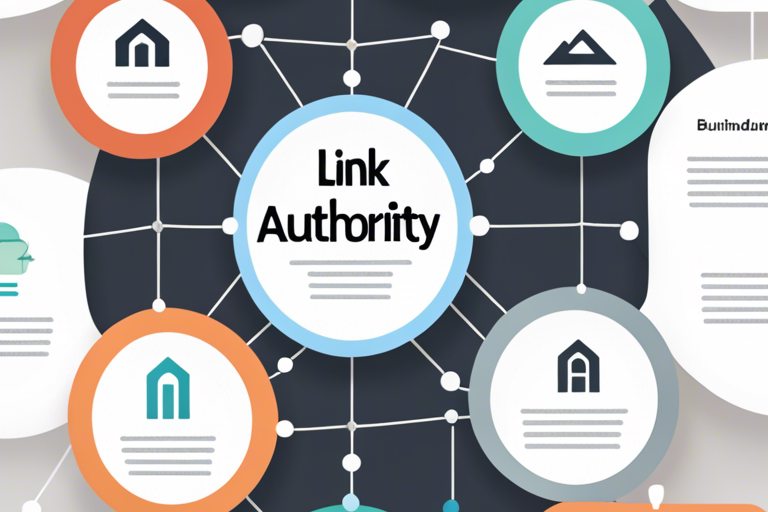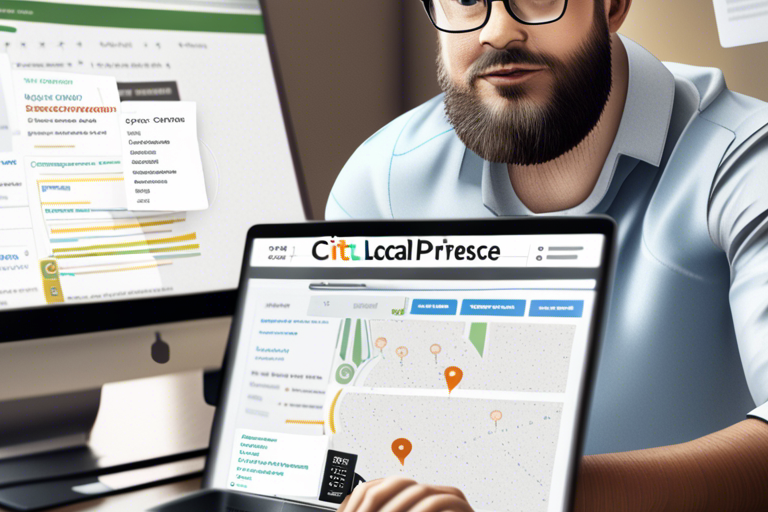SEO Made Simple: A Step-by-Step Tutorial for Beginners

Are you a beginner looking to unlock the secrets of SEO? If so, you've come to the right place! In this step-by-step tutorial, we will demystify the world of Search Engine Optimization and equip you with the knowledge to drive organic traffic to your website.
Imagine this scenario: You have a beautiful website that showcases your products or services, but no one seems to find it. It's like having a hidden gem buried in the depths of the internet. Frustrating, isn't it? But fear not, because SEO is here to save the day!
In this informative blog, we will address all your SEO pain points and guide you through the process of optimizing your website for search engines. From keyword research to on-page optimization and link building, we'll cover it all. You'll walk away with a toolbox of practical techniques and expert tips that will help you skyrocket your website's visibility.
So, buckle up and get ready to dive into the exciting world of SEO. Let's drive more traffic, increase your online presence, and leave your competitors wondering how you managed to climb the search engine rankings. Get ready to make SEO simple and unleash your website's true potential.
Table Of Contents.
- Understanding Search Engine Optimization (SEO)
- Importance of SEO for Businesses
- Keyword Research: The Foundation of SEO
- On-Page Optimization: Optimizing Your Web Pages
- Creating High-Quality Content: A Key SEO Strategy
- Link Building: Boosting Your Page Authority
- The Role of User Experience in SEO
- Staying Up to Date: Navigating Algorithm Updates
- Measuring Success: Analytics and Monitoring
- Utilizing Local SEO for Business Growth
- Best Practices for On-Page SEO
- Enhancing Your Page's Visibility in Search Results
- SEO for E-commerce Websites: Tips and Tricks
- The Power of Content Promotion and Social Media
- Advanced SEO Strategies: Going Beyond the Basics
- Understanding SEO Metrics and Key Performance Indicators (KPIs)
- The Most Important Things to Consider in SEO
- Optimizing Your Website for Mobile Users
- Ensuring Your Website's Accessibility for All Users
- Conclusion
1. Understanding Search Engine Optimization (SEO)

1.1 What is Search Engine Optimization (SEO)?
Search Engine Optimization (SEO) is the practice of optimizing a website to improve its visibility and search engine rankings. It involves various techniques and strategies to enhance the chances of a web page appearing on the top-ranking pages of search engine results. In simpler terms, SEO is the process of making your website more attractive to search engines like Google, Bing, or Yahoo, so that they show your website as a top result when people search for relevant keywords.
1.2 Why is SEO important for your website?
In today's digital age, the majority of website traffic comes from search engines. When users search for information, products, or services on the internet, search engines provide a list of relevant web pages based on their algorithms. Studies have shown that most users click on the top-ranking pages of search results, rarely looking beyond the first few results. Therefore, if your website doesn't appear on the first page, it is highly unlikely to receive organic search traffic.
1.3 The Basics of SEO: On-Page Optimization
One of the core aspects of SEO is on-page optimization. It involves optimizing the content and structure of your web pages to make them more attractive to both search engines and users. Here are some key elements of on-page optimization:
1.3.1 Keyword Research: Conducting thorough keyword research is the first step of any good SEO strategy. By understanding the popular search terms related to your industry or niche, you can optimize your web pages to match user intent. Tools like Google Keyword Planner can help you find relevant keywords with a high search volume.
1.3.2 Title Tags and Meta Descriptions: The title tag is an HTML element that defines the title of a web page. It appears as the main clickable link in search engine results. A well-crafted title tag, including relevant keywords, can greatly improve your site's visibility and click-through rates. Meta descriptions, on the other hand, provide a brief summary of the content on a web page. They help users understand what the page is about before clicking on the link.
1.3.3 User Experience and Page Load Speed: User experience plays a crucial role in SEO. Search engines prioritize websites that offer
2. Importance of SEO for Businesses

In today's digital landscape, having a strong online presence is crucial for businesses of all sizes. Search engine optimization (SEO) plays a vital role in helping businesses get discovered by their target audience and stay competitive in the online marketplace. Implementing effective SEO strategies can significantly impact a business's visibility, website traffic, and overall success. Let's explore the importance of SEO for businesses in more detail.
1. Increased Organic Search Visibility
"SEO is all about getting your website to appear in the top-ranking pages of search engine results."
To achieve success in the online world, businesses need to ensure that their website appears in the top search results when users search for relevant keywords. By optimizing your website for search engines, you can significantly improve its visibility in organic search results. This increased visibility will drive more traffic to your website, exposing your brand to a wider audience and increasing the chances of attracting potential customers.
2. Better User Experience
"Providing a seamless user experience is essential for both search engines and users."
SEO isn't just about keywords and rankings; it's also about providing a great user experience. Search engines prioritize websites that offer valuable and relevant content, fast loading times, mobile responsiveness, and easy navigation. By investing in SEO, you ensure that your website is user-friendly, resulting in higher engagement, longer visit duration, and lower bounce rates. This, in turn, signals to search engines that your website offers high-quality content and can help improve your organic rankings.
3. Targeted Traffic and Increased Conversions
"SEO helps businesses attract highly targeted traffic that is more likely to convert into customers."
One of the significant benefits of SEO is its ability to target specific keywords and search queries. By optimizing your website for relevant keywords related to your products or services, you can attract highly targeted traffic that is more likely to convert into customers. When users find your website in search results while actively searching for solutions you offer, it increases the chances of visitors taking desired actions, such as making a purchase, subscribing to a newsletter, or filling out a contact form. This targeted traffic leads to higher conversion rates and a better return on investment (ROI).
4. Cost-Effective Marketing Strategy
"SEO provides long-term benefits and is a cost-effective marketing strategy for businesses."
Compared to other digital marketing strategies like pay-per-click (PPC) advertising, SEO offers a cost-effective long-term solution for businesses. While PPC can provide instant visibility, it requires continuous investment
3. Keyword Research: The Foundation of SEO

In the world of search engine optimization (SEO), keyword research is the first crucial step towards improving your website's visibility in search engine results. By understanding the search terms users are using to find information related to your industry or niche, you can strategically optimize your web pages to align with those queries and increase your chances of ranking higher in search results. Let's dive into the key aspects of keyword research and how it forms the foundation of successful SEO strategies.
1. Understanding User Intent:
Before you can begin identifying the right keywords to target, it's essential to grasp the intent behind a user's search query. User intent refers to the reason behind someone's search, and it typically falls into one of four categories: informational, navigational, transactional, or commercial investigation. By understanding the intent, you can tailor your content to provide the most relevant information that meets the user's needs.
2. Researching Relevant Keywords:
Keyword research involves identifying the specific words and phrases that users are searching for when they are looking for information related to your business or industry. This step is crucial because it helps you understand the language and terminology commonly used by your target audience.
To conduct effective keyword research, there are various tools available that can provide insights into search volume, competition, and related terms. Some popular tools include Google Keyword Planner, SEMrush, and Moz Keyword Explorer. Using these tools, you can compile a list of relevant keywords that have a good search volume and moderate competition.
3. Analyzing Keyword Difficulty:
Once you have your list of potential keywords, it's important to assess their level of difficulty. Keyword difficulty refers to the competitiveness of a keyword in terms of ranking on the search engine results page. A keyword with high difficulty means it will be challenging to outrank established websites and pages already targeting that keyword.
To determine keyword difficulty, you can use tools like Ahrefs or Moz that provide a metric to assess the competition level for each keyword. Aim for a mix of high-difficulty and low-difficulty keywords, so you can steadily build your online presence while targeting achievable rankings.
4. Mapping Keywords to Web Pages:
After finalizing your keyword list, the next step is to map each keyword to its respective web page on your site. This involves optimizing the page's content, meta tags (such as title tags and meta descriptions), and other on-page elements to include the chosen keyword. This targeted optimization helps search engines understand the relevance of your
4. On-Page Optimization: Optimizing Your Web Pages

When it comes to improving your website's visibility on search engines like Google, on-page optimization plays a crucial role. By optimizing your web pages, you can make them more appealing to search engines and increase your chances of ranking higher in search results. In this section, we will explore some key strategies and best practices for on-page optimization.
1. Conduct Keyword Research
Before diving into on-page optimization, it's important to conduct thorough keyword research. This involves identifying the search terms and phrases that your target audience is using to find the products or services you offer. By incorporating these keywords strategically throughout your web pages, you can help search engines understand the relevance and context of your content.
2. Optimize Your Title Tags and Meta Descriptions
Title tags and meta descriptions are essential elements of on-page optimization. The title tag is displayed as the headline of your web page in search results, and the meta description provides a concise summary of the page's content. These elements should accurately reflect the topic of your page and include relevant keywords to attract user attention and improve click-through rates.
3. Create High-Quality and Relevant Content
High-quality and relevant content is the backbone of on-page optimization. It's important to create informative, engaging, and original content that meets the needs and interests of your target audience. Make sure your content is well-structured with subheadings, bullet points, and numbered to enhance readability and provide a better user experience.
4. Optimize Your Page URLs and Headings
In addition to title tags and meta descriptions, optimizing your page URLs and headings can greatly impact your on-page optimization efforts. Ensure that your URLs are descriptive and contain relevant keywords, while your headings (H2, H3, etc.) should be optimized with keywords and provide clear structure to your content.
5. Improve User Experience
User experience is a crucial factor for both users and search engines. To enhance user experience and boost your on-page optimization, make sure your website loads quickly, is mobile-friendly, and is easy to navigate. Additionally, provide internal links to relevant pages within your website to help users explore further and increase their engagement.
6. Incorporate Multimedia Elements
Adding multimedia elements, such as images, videos, and infographics, can make your web pages more engaging and visually appealing. These elements not only enhance the user experience but also provide an opportunity to optimize them with alt tags and captions to improve accessibility and increase the chances
5. Creating High-Quality Content: A Key SEO Strategy

When it comes to search engine optimization (SEO), creating high-quality content is an essential strategy for improving your site's visibility and attracting organic traffic. In this section, we will explore the importance of high-quality content in SEO and provide valuable tips for producing engaging and relevant content that aligns with user intent.
1. Understanding the User Intent
To create high-quality content, it is crucial to understand the user's intent behind their search queries. User intent refers to the reason behind why someone is searching for a particular keyword or phrase. By understanding the intent, you can tailor your content to provide the information or solution that users are seeking. For example, if the user intends to gain knowledge about coffee machines, you can create content that showcases the "Best Coffee Machines for Home Use" or "How to Choose the Right Coffee Machine for Your Needs."
2. Keyword Research and Optimization
Keyword research is a crucial step in creating content that ranks well in search engine results. By identifying relevant keywords and optimizing your content around them, you increase the likelihood of ranking higher in search engine results pages (SERPs). Use keyword research tools to find popular and relevant keywords in your niche. Include these keywords naturally throughout your content, including in the title tag, headings, and body text. Incorporating related terms and key phrases also helps to expand your content's relevance and reach.
3. Providing Valuable and Informative Content
To meet the criteria of expertise, authoritativeness, trustworthiness (E-A-T), and the Google Helpful Content Guidelines, it's important to provide accurate and up-to-date information supported by reliable sources. Ensure your content is original, comprehensive, and relevant to the user's query or intent. Incorporate informative s that guide readers through your content and provide them with actionable insights. Additionally, using lists, quotes, and stats from reputable sources helps add depth and credibility to your content.
4. Optimizing On-Page Elements
Apart from the actual content, optimizing on-page elements is crucial for improving the visibility of your content in search results. Pay attention to elements such as meta descriptions, title tags, headings, and URL structure. Craft compelling meta descriptions that accurately summarize the content and entice users to click. Include relevant keywords in your title tags and headings to help search engines understand the topic and context of your content.
5. Engaging User Experience
User experience plays a critical role in retaining visitors to your site and
6. Link Building: Boosting Your Page Authority

Link building plays a critical role in improving your page authority and gaining higher rankings in search engine results. By acquiring high-quality backlinks from reputable websites, you can signal to search engines that your content is valuable and trustworthy. Here are some effective strategies to enhance your link-building efforts:
1. Guest Blogging:
One of the most popular and effective methods of building backlinks is through guest blogging. Identify industry-related websites that accept guest posts and reach out to them with valuable content ideas. By contributing informative articles to these websites, you can establish your expertise and earn backlinks to your own site.
2. Content Promotion:
Create compelling and shareable content that naturally attracts links. Develop comprehensive and valuable blog posts, infographics, videos, or guides that provide unique insights or solve problems within your niche. Once your content is ready, promote it through various channels such as social media, email newsletters, and industry forums. This will increase its visibility and encourage other websites to link back to your valuable resource.
3. Influencer Outreach:
Collaborating with influencers in your industry can greatly boost your link-building efforts. Identify influential individuals or companies related to your niche and establish a relationship with them. Reach out to them with relevant content collaborations or requests for guest posting opportunities. When influencers associate their name with your content, it not only enhances your credibility but also attracts more links from their followers.
4. Broken Link Building:
Identify websites within your industry that have broken links on their pages. Broken link building involves reaching out to the website owner and suggesting a replacement link to your own content that fills the gap. This mutually beneficial approach helps the website owner fix broken links, while you earn a valuable backlink to your own site.
5. Local Directory Listings:
If you have a local business, ensure that you are listed in relevant local directories. This not only improves your online visibility but also helps with local SEO efforts. Submit your business information to reputable directories such as Google My Business, Yelp, and Yellow Pages.
7. The Role of User Experience in SEO

User experience (UX) plays a crucial role in SEO (search engine optimization) as it directly affects how users engage with your website and influences search engine rankings. When it comes to attracting and retaining visitors, providing a satisfying user experience is vital. Let's explore the various ways in which user experience impacts SEO.
1. Page Loading Speed:
A fast-loading website is essential for a positive user experience. Slow loading times can lead to high bounce rates, where users quickly navigate away from your site. It's important to optimize your web pages by minimizing file sizes, leveraging browser caching, and utilizing content delivery networks (CDNs) to ensure swift loading speeds.
2. Mobile Responsiveness:
With the majority of internet users accessing websites on their mobile devices, having a mobile-friendly website is no longer optional. Google places a significant emphasis on mobile-friendliness and rewards websites that adapt to different screen sizes. Ensure your site is fully responsive and provides a seamless experience across all devices.
3. Easy Navigation:
A well-structured and intuitive website navigation enhances the user experience. Visitors should be able to find information easily and navigate through your site effortlessly. Make sure your navigation menu is organized, logical, and prominently displayed. Utilize breadcrumbs, internal links, and a search function to assist users in finding what they're looking for.
4. Engaging and Relevant Content:
High-quality content that meets the users' expectations and provides value is crucial for user engagement and SEO. Create informative and compelling content that addresses the users' queries and needs. Incorporate relevant keywords naturally within your content to improve search engine visibility. Remember to update your content regularly to keep it fresh and up-to-date.
5. Clear Call-to-Actions (CTAs):
A well-designed website includes clear and effective call-to-actions, prompting users to take the desired actions. Whether it's signing up for a newsletter, making a purchase, or contacting your business, strategically placed CTAs guide users through your website and increase conversions. Ensure your CTAs are visually appealing, easily clickable, and persuasive.
6. Error-Free Website:
Errors and broken links can harm the user experience and negatively impact your SEO efforts. Regularly check for broken links, 404 errors, and other technical issues that may frustrate users. Monitor your website's health using webmaster tools to detect and fix any issues promptly.
8. Staying Up to Date: Navigating Algorithm Updates

Keeping up with algorithm updates is crucial for maintaining a successful SEO strategy. Search engines, like Google, continuously refine their algorithms to provide users with the most relevant and high-quality search results. As an SEO-savvy individual, staying abreast of these updates is essential to ensure your website remains visible and competitive in the ever-evolving digital landscape.
1. Understand Algorithm Updates:
Algorithm updates are changes made to the search engine's ranking criteria and factors. These updates aim to improve the quality of search results and deliver a better user experience. Some updates may have a significant impact on website rankings, while others may be more subtle. The key is to stay informed about these changes to adapt your SEO practices accordingly.
2. Reliable Sources of Information:
To stay updated with algorithm changes, it's crucial to follow reputable sources that provide accurate and timely information. SEO-focused blogs, industry forums, and Google's official announcements are good starting points. These resources often analyze and discuss the updates, providing insights on how to adapt your SEO strategies to comply with the new ranking factors.
3. Stay Current with SEO Blogs:
SEO professionals and experts publish insightful articles and analysis on algorithm updates, explaining their potential implications and offering suggestions on how to adapt. Regularly reading trusted SEO blogs can help you understand the updates and their impact on search engine rankings.
4. Google's Official Statements:
Google occasionally releases official statements and guidelines regarding algorithm updates. These updates may provide explicit instructions on best practices or highlight changes in ranking factors. Keeping an eye on such statements can offer valuable insights into how to navigate the updates effectively.
5. Analyze Impacts:
When significant algorithm updates occur, it's essential to analyze their impact on your website's rankings and traffic. Monitor the changes in your organic search performance using analytics tools and search console data. Identifying any noticeable fluctuations can help you pinpoint the potential areas of improvement or adjustment needed in your SEO strategy.
6. Adapt Your Strategy:
After understanding the implications of algorithm updates, it is crucial to make the necessary adjustments to your SEO strategy. This may involve tweaking on-page optimization, addressing technical issues, or improving user experience. By aligning your website with the new ranking factors, you can enhance its visibility and maintain or improve your search rankings.
9. Measuring Success: Analytics and Monitoring

Once you have implemented your SEO strategy and optimized your web pages, it's crucial to measure the success of your efforts. Analytics and monitoring play a vital role in understanding how your website is performing, identifying areas of improvement, and making data-driven decisions to enhance your SEO efforts. Here are some key elements to consider when measuring your SEO success:
9.1 Setting Up Google Analytics (keyword: analytics, web page)
To effectively measure your SEO success, start by setting up Google Analytics for your website. Google Analytics provides valuable insights into your website's performance, visitor behavior, traffic sources, and much more. By linking your website to Google Analytics, you can track the effectiveness of your SEO campaigns, monitor key metrics such as organic traffic and bounce rate, and gather data to make informed decisions.
9.2 Monitoring Organic Search Performance (keyword: organic search result, site rank)
One of the most important aspects of SEO measurement is monitoring your organic search performance. Keep a close eye on your site's ranking in search engine result pages (SERPs) for target keywords and phrases. Tools like Google Search Console and third-party SEO tools can provide valuable data on keyword rankings, click-through rates, and impressions. Regularly analyzing and tracking these metrics will help you gauge the effectiveness of your SEO efforts and make necessary adjustments.
9.3 Analyzing User Experience (keyword: user experience, on-page optimization)
User experience is a crucial element of successful SEO. Analyze user behavior on your website, including time on page, bounce rate, page views, and conversion rate. By understanding how visitors interact with your website, you can identify performance issues, optimize on-page elements, and enhance the overall user experience. Don't forget to pay attention to mobile user experience as well, considering the growing number of searches conducted on mobile devices.
9.4 Tracking Conversions and Goals (keyword: user intent, small business)
Tracking conversions and goals is essential for measuring SEO success. Define key metrics that align with your business objectives, such as form submissions, purchases, newsletter sign-ups, or any other desired actions on your website. Set up conversion tracking in Google Analytics to measure and analyze these goal completions. Tracking conversions will help you assess the ROI of your SEO efforts and identify opportunities for improvement.
9.5 Monitoring Page Speed and Technical Performance (keyword: on-page SEO, search engine optimization)
Page speed and technical performance have a significant impact on user experience and search engine
10. Utilizing Local SEO for Business Growth

Local SEO is a crucial aspect of search engine optimization that focuses on optimizing your website and online presence to target local customers and improve your visibility in local search results. With more and more people using search engines to find local businesses, implementing effective local SEO strategies is essential for business growth. In this section, we will explore the key elements and best practices of local SEO that can significantly impact your online visibility and drive more customers to your doorstep.
1. Understanding the Importance of Local SEO
Local SEO refers to the process of optimizing your website to target local customers searching for products or services in your specific geographical area.
According to recent studies, around 46% of all Google searches have local intent, meaning that users are actively looking for nearby businesses.
By implementing local SEO strategies, you can improve your chances of appearing in the local search results, giving you a competitive edge over businesses that aren't optimized for local searches.
2. Optimizing Your Google My Business Listing
Google My Business is a free tool provided by Google that allows businesses to manage their online presence, including their business information, reviews, and photos.
Ensure that your Google My Business profile is complete and accurate, providing detailed information about your business, such as your address, phone number, opening hours, and website URL.
Encourage your customers to leave reviews on your Google My Business page, as positive reviews can have a significant impact on your local search rankings.
3. Nailing Your On-Page SEO for Local Searches
Implementing on-page SEO techniques specific to local searches can help search engines understand the relevance of your website to local queries.
Optimize your website's title tags and meta descriptions by including relevant keywords and location information.
Create location-specific content, such as landing pages or blog posts that target specific areas or neighborhoods within your target market.
Include your business address, phone number, and other contact details on each page of your website.
4. Building Citations and Local Listings
Citations are online references to your business's name, address, and phone number (NAP) on various websites, such as online directories and review sites.
Ensure that your NAP information is consistent across all online platforms to avoid any confusion or potential negative impact on your local search rankings.
Add your business to relevant local directories and listings, such as Yelp, Yellow Pages, and industry-specific directories.
Seek out opportunities to secure backlinks
11. Best Practices for On-Page SEO

When it comes to optimizing your web pages for search engines, there are certain best practices that can significantly improve your chances of ranking higher in search results. By implementing these on-page SEO techniques, you can enhance user experience, increase your site's visibility, and ultimately drive more organic traffic to your website.
1. Conduct Comprehensive Keyword Research (keyword research)
Keyword research is the foundation of any successful SEO strategy. Start by understanding what your target audience is searching for and identify relevant keywords that align with their search intent. Use keyword research tools, such as Google Keyword Planner or SEMrush, to uncover high-volume keywords with low competition. Focus on long-tail keywords to target specific user queries and increase your chances of ranking.
2. Optimize Your Title Tags (title tag)
Title tags are one of the most important on-page SEO elements. They appear as clickable headlines in search engine results and give users a brief preview of the content. Ensure your title tags accurately describe the page's content while incorporating the targeted keyword. Keep them concise, ideally between 50-60 characters, to avoid truncation in search results.
3. Craft Compelling Meta Descriptions (meta description)
Meta descriptions are the brief snippets that summarize the content of a web page. While they don't have a direct impact on search rankings, they significantly influence click-through rates. Create compelling meta descriptions that accurately represent your content, entice users to click, and include relevant keywords. Aim for concise and engaging descriptions, typically around 150-160 characters.
4. Optimize Your Heading Structure (H3 Heading Structure)
Properly structuring your headings not only improves readability but also helps search engines understand the hierarchy and relevance of your content. Use H1 tags for your main heading, H2 tags for subheadings, and H3 tags for further subheadings. Incorporate your targeted keywords naturally into the headings to signal their significance to both users and search engines.
5. Optimize Your Content with Targeted Keywords (keyword research, on-page optimization)
To boost the relevancy of your web pages, optimize your content by incorporating targeted keywords strategically. However, avoid keyword stuffing, as it can lead to a poor user experience and potential penalties from search engines. Write high-quality, informative content that naturally incorporates keywords related to your topic. Aim for a keyword density of around 1-2% to maintain a balanced and natural flow.
6. Improve User Experience
12. Enhancing Your Page's Visibility in Search Results

When it comes to search engine optimization (SEO), enhancing your page's visibility in search results is a crucial step. By optimizing your website and its content, you can improve your chances of appearing higher in search engine rankings and attracting more organic traffic. In this section, we'll explore some effective strategies to help you enhance your page's visibility in search results.
1. Keyword Research (keyword research, search query, related term)
One of the first steps in optimizing your page for search results is conducting keyword research. This involves identifying the keywords and phrases that your target audience is likely to use when searching for relevant information. By incorporating these keywords strategically into your content, you can increase the visibility of your page for specific search queries. Use keyword research tools like Google Keyword Planner or SEMrush to find relevant keywords with high search volume and low competition.
2. On-Page Optimization (on-page optimization, title tag, meta description, internal link)
On-page optimization plays a critical role in improving your page's visibility in search results. Start by optimizing your title tag, which is the HTML element that specifies the title of your web page. Make sure it accurately reflects the content of your page and includes relevant keywords. Craft a compelling meta description, a brief summary that appears below the page title in search results. Utilize keywords naturally while enticing users to click on your page. Additionally, internal linking within your website can help search engines understand the structure and hierarchy of your content, enhancing its visibility.
3. User Experience (user experience, site rank, organic search result)
User experience is another important factor that search engines consider when ranking pages. A well-designed and user-friendly website that loads quickly, is mobile-responsive and offers relevant and valuable content can significantly improve your site's rank in search results. Remember, search engines strive to provide the best possible organic search results to users, so focusing on delivering an exceptional user experience can positively impact your site's visibility.
4. High-quality content (blog post, content idea, good news)
Creating high-quality, valuable, and engaging content is a cornerstone of SEO. Along with providing useful information, your content should be well-written, relevant, and authoritative. Develop informative blog posts that address common questions or challenges in your industry. Offer unique insights, share personal experiences, and provide practical tips that readers can apply. This not only establishes you as an expert in your field but also encourages other websites to link
13. SEO for E-commerce Websites: Tips and Tricks

E-commerce websites have unique requirements when it comes to SEO. With so many products to showcase and different pages to optimize, it's essential to have a solid SEO strategy in place. In this section, we'll explore some tips and tricks specifically tailored for e-commerce websites to help you improve your search engine rankings and drive more traffic to your online store.
1. Perform Keyword Research:
Keyword research is the foundation of any successful SEO strategy. Start by identifying relevant keywords that are not only related to your products but also align with user intent. Use tools like Google Keyword Planner, SEMrush, or Ahrefs to discover keywords with high search volume and low competition. Incorporate these keywords strategically into your product descriptions, titles, and headings to enhance your chances of ranking higher in search results.
2. Optimize Product Pages:
Every product page on your e-commerce website is an opportunity to attract organic traffic. Optimize these pages by including unique and descriptive product titles, compelling meta descriptions, and informative product descriptions that highlight the key features and benefits. Ensure that your URLs are clean and include relevant keywords. Don't forget to optimize your product images by adding descriptive alt tags.
3. Enhance User Experience:
A seamless user experience is crucial for both your users and search engines. Make sure your website is mobile-friendly, as Google prioritizes mobile-friendly websites in search results. Improve your website's loading speed to reduce bounce rates and increase conversions. Simplify your site navigation to enable easy browsing and include clear calls-to-action to encourage users to take the next step.
4. Implement Structured Data Markup:
Structured data markup, also known as schema markup, helps search engines understand your content better and display relevant information in search results. For e-commerce websites, it's particularly beneficial to mark up product information such as price, availability, and reviews. This can enhance the visibility of your products in search results, leading to higher click-through rates.
5. Build High-Quality Backlinks:
Earning quality backlinks from reputable websites is an effective way to boost your search rankings. Reach out to relevant industry influencers, bloggers, and media outlets to secure backlinks to your product pages or category pages. Additionally, consider submitting your products to reputable online directories or industry-specific platforms. Remember, the key is to focus on acquiring authoritative and relevant backlinks rather than quantity.
6. Leverage Customer Reviews:
Customer reviews play a significant
14. The Power of Content Promotion and Social Media

When it comes to search engine optimization (SEO), creating high-quality content is only the first step. To truly maximize its impact and reach a wider audience, you need to leverage the power of content promotion and social media. Let's dive into why these strategies are crucial for boosting your website's visibility in search engine results.
1. Content Promotion: Taking Your Content to New Heights
Once you've created valuable and informative content, it's essential to promote it effectively. Content promotion involves actively sharing and distributing your content across various platforms, such as social media, industry forums, and email newsletters. By reaching out to a wider audience, you increase the chances of your content being discovered and shared which, in turn, can drive more traffic to your website.
One effective strategy for content promotion is to identify influencers and industry experts in your niche. Reach out to them and ask if they would be interested in sharing your content with their followers. Collaborating with influencers can significantly amplify the reach of your content and attract new visitors to your website.
Pro Tip: Don't limit yourself to just text-based content. Experiment with different formats, such as infographics, videos, or podcasts, to cater to different audiences and capture their attention.
2. Social Media: Harnessing the Power of Engagement
Social media platforms offer a tremendous opportunity to connect with your target audience, build brand awareness, and drive traffic to your website. By strategically leveraging social media, you can create a compelling brand presence, engage with users, and promote your content to a larger audience.
Start by identifying the social media platforms that your target audience frequents the most. This could include popular platforms like Facebook, Instagram, Twitter, or LinkedIn. Develop a social media marketing strategy that aligns with your brand voice and objectives. Share your content regularly, engage with your followers, and use relevant hashtags to increase your visibility within your niche.
Remember, social media is not just about broadcasting your own content. Actively engage with your audience by responding to comments, sharing relevant industry news, and participating in discussions. This builds trust, strengthens your brand reputation, and encourages users to visit your website for more valuable information.
Pro Tip: Invest time in building a community around your brand. Encourage user-generated content, host giveaways or contests, and share customer testimonials to foster a sense of loyalty and engagement among your followers.
15. Advanced SEO Strategies: Going Beyond the Basics

When it comes to search engine optimization (SEO), there's always room to take your strategies to the next level. While understanding the basics is important, implementing advanced techniques can give you a competitive edge and help you achieve even higher rankings on search engine result pages (SERPs). In this section, we'll explore some advanced SEO strategies that go beyond the fundamentals and delve into more complex tactics.
1. Keyword Research and Targeting (Keywords)
In order to optimize your web pages effectively, it's crucial to conduct thorough keyword research. Identify relevant keywords and phrases that have high search volumes and low competition. These keywords will be the foundation of your content optimization efforts.
Utilize keyword research tools such as Google Keyword Planner or SEMrush to discover new keywords and determine their search volumes and competitiveness.
Target long-tail keywords to capture specific user intents and attract highly targeted traffic to your website. These keywords typically have lower search volumes but higher conversion rates.
Incorporate your target keywords naturally into your content, including headings, subheadings, meta tags, and within the body text. However, avoid keyword stuffing, as it can negatively impact your rankings.
2. On-Page Optimization (On-Page SEO, Meta Description, Title Tag)
Optimize your web pages with on-page SEO techniques to ensure they are easily understood by search engines and effectively communicate the relevancy of your content. This includes optimizing meta descriptions, title tags, header tags, and URL structures.
Craft compelling meta descriptions that accurately summarize the content and entice users to click through to your website. Use relevant keywords and keep the character limit within the recommended range.
Write attention-grabbing title tags that not only contain target keywords but also appeal to users and encourage them to click on your link.
Utilize header tags (H1, H2, H3, etc.) to structure your content and make it more readable. Incorporate relevant keywords into your headings to signal the topic of each section.
3. Internal Linking (Internal Link)
Strategically interlink your website's pages to distribute link authority and enhance user navigation. Internal links help search engines understand the hierarchy and relationships between your web pages.
Create anchor texts that are descriptive and contain relevant keywords. These anchor texts serve as signals to search engines about the content of the linked page.
Use internal linking to guide users to other valuable resources on your website, increase the time
16. Understanding SEO Metrics and Key Performance Indicators (KPIs)

When it comes to measuring the effectiveness of your SEO efforts, understanding key metrics and performance indicators is crucial. These metrics provide valuable insights into the performance of your website, the impact of your SEO strategies, and the overall success of your online presence. Below, we'll explore some important SEO metrics and KPIs that every website owner should be familiar with.
1. Organic Search Traffic:
This metric measures the number of visitors that come to your website through organic search results. It shows how well your website is ranking in search engines and indicates the effectiveness of your SEO efforts. Monitor your organic search traffic regularly to identify trends and make necessary adjustments to improve your ranking.
2. Keyword Rankings:
Tracking your keyword rankings allows you to see how well your website ranks in search engine results for specific keywords. By monitoring your ranking positions, you can identify opportunities for improvement and adjust your SEO strategy accordingly. Keep in mind that rankings can fluctuate, so it's important to focus on long-term trends rather than short-term changes.
3. Click-Through Rate (CTR):
CTR measures the percentage of users who click on your website when it appears in search engine results. A high CTR indicates that your website's title and meta description are compelling and relevant to users' search queries. Optimizing your title tags and meta descriptions can help improve your CTR and drive more traffic to your website.
4. Bounce Rate:
Bounce rate measures the percentage of visitors who leave your website after viewing only one page. A high bounce rate can indicate that visitors are not finding the information they need or that your website's user experience needs improvement. Analyze your website's bounce rate to identify areas for optimization and make changes to encourage visitors to explore more pages.
5. Conversion Rate:
Conversion rate is the percentage of visitors who complete a desired action on your website, such as making a purchase, submitting a form, or signing up for a newsletter. This metric indicates how successful your website is at converting visitors into customers or leads. Track your conversion rate to identify areas for improvement and optimize your website's conversion funnel.
6. Page Load Time:
Page load time refers to the amount of time it takes for your web pages to fully load. Slow page load times can negatively impact user experience and lead to higher bounce rates. Optimize your website's performance by minimizing page load times to ensure a seamless and fast user experience.
17. The Most Important Things to Consider in SEO

When it comes to search engine optimization (SEO), there are several key factors that play a crucial role in determining your website's visibility in search results. Understanding these important considerations is essential for any business or individual looking to improve their online presence and reach their target audience effectively.
1. Comprehensive Keyword Research (keyword research, search query, related term):
Before starting any SEO strategy, it is vital to conduct thorough keyword research. Identifying the right keywords that align with your business and target audience is the foundation of successful SEO. Tools like Google Keyword Planner or SEMrush can assist you in finding relevant keywords with high search volumes and low competition. Remember to focus on long-tail keywords that are specific to your niche, as they often have a higher conversion rate.
2. On-Page Optimization (on-page SEO, title tag, meta description):
Optimizing your web pages is a critical component of SEO. Ensure that each page has a unique title tag and meta description that accurately reflects the content and includes relevant keywords. These elements provide search engines and users with a clear understanding of what your page is about. Incorporate keywords naturally throughout your content, including headers, paragraphs, and image alt tags, to enhance the visibility of your pages in search results.
3. User Experience (user experience, site rank):
A positive user experience is paramount for SEO success. Search engines prioritize websites that offer a seamless browsing experience, including fast loading times, mobile responsiveness, and intuitive navigation. Pay attention to the overall design and structure of your website, making it easy for visitors to find what they are looking for. High-quality content that answers user queries and engages readers is also essential.
4. Building High-Quality Links (link building, internal link):
Link building remains a crucial aspect of SEO. By acquiring high-quality backlinks from reputable websites, you can demonstrate authority, trustworthiness, and relevance to search engines. Seek opportunities for guest blogging, collaboration, and outreach to build relationships with other industry influencers or authoritative websites. Additionally, internal linking within your own website improves navigation and helps search engines understand the structure and relevance of your content.
5. Regular Monitoring and Adjustments (algorithm update):
SEO is an ongoing process that requires continuous monitoring and adjustments. Stay updated with the latest algorithm changes and optimize your website accordingly. Tools like Google Analytics and Google Search Console provide valuable insights into your website's performance and user behavior. Regularly analyze your SEO metrics, including
18. Optimizing Your Website for Mobile Users

In today's digital age, optimizing your website for mobile users is essential for a successful online presence. With the increasing number of people accessing the internet through their smartphones and tablets, it's crucial to ensure that your website is fully responsive and user-friendly across different devices and screen sizes. Here are some key strategies to optimize your website for mobile users:
1. Implement a responsive design: A responsive design allows your website to adapt and display properly on any device, be it a smartphone, tablet, or desktop. This ensures that users have a seamless browsing experience, regardless of the device they are using. It's important to invest in a mobile-responsive theme or work with a web developer to make your website responsive.
2. Prioritize mobile loading speed: Mobile users are notorious for their impatience when it comes to loading times. If your website takes too long to load, visitors are more likely to abandon it and move on to your competitors. Optimize your website's loading speed by compressing images, minimizing redirects, and leveraging caching techniques. This will not only improve user experience but also boost your website's ranking in search engine results.
3. Simplify navigation and user interface: Mobile screens are smaller, so it's crucial to simplify your website's navigation and user interface. Make sure that buttons and links are large enough to be easily clickable with a fingertip. Streamline the menu and keep it concise for mobile users. Additionally, use intuitive gestures and interactions to enhance the user experience.
4. Optimize content for mobile consumption: Mobile users tend to have shorter attention spans, so it's important to optimize your content for easy consumption. Keep paragraphs short, use bullet points, subheadings, and numbers to break up the text, and include relevant images and videos to enhance engagement. Additionally, make sure your font size is legible on small screens.
5. Leverage local search optimization: If you have a local business, optimizing your website for local search is crucial in reaching your target audience. Ensure that your contact information, such as your address, phone number, and business hours are prominently displayed on your mobile site. Take advantage of local directories and listings, such as Google My Business, to improve your local search visibility.
6. Test and monitor your mobile website: Regularly test your website on different mobile devices and ensure that all functionalities are working seamlessly. Monitor your website's performance, track user behavior, and analyze the data to
19. Ensuring Your Website's Accessibility for All Users

When it comes to search engine optimization (SEO), one crucial aspect that often gets overlooked is website accessibility. The accessibility of your website refers to its ability to be easily navigated and understood by all users, including those with disabilities. To enhance your website's accessibility, consider the following:
1. Clear and Readable Content:
Use a legible font size and type, ensuring that your content is readable for users with visual impairments.
Break up your content into small paragraphs and use s to improve readability and make it easier for users to scan your page.
2. Descriptive Alt Text:
Include descriptive alt text for your images to provide context for visually impaired users who rely on screen readers.
Use keywords naturally while maintaining the intended meaning and purpose of the image.
3. Proper Use of Headings:
Structure your content with headings (H2, H3, etc.) to create a clear hierarchy.
Use headings to highlight important sections of your content and improve the overall user experience.
4. Keyboard Navigation:
Ensure that your website can be easily navigated using only a keyboard.
Users who have mobility impairments rely on keyboard navigation to browse websites effectively.
5. Captioning and Transcripts:
Provide captions and transcripts for all audio and video content to accommodate users with hearing impairments.
This ensures that everyone can access the information your content provides.
6. Color Contrast:
Choose color combinations that provide sufficient contrast between background and text to accommodate users with visual impairments.
Ensure that the text is easily distinguishable from the background.
Remember that ensuring website accessibility is not only beneficial for users with disabilities but also enhances the overall user experience for all visitors. A user-friendly website is more likely to receive higher engagement, which can positively impact your search engine rankings.
20. Conclusion

In this comprehensive guide, we have covered the basics of search engine optimization (SEO) and provided step-by-step instructions for beginners to improve their website's visibility on search engines. By implementing the strategies outlined in this tutorial, you can enhance your website's organic search results, increase traffic, and ultimately grow your online presence.
To recap, here are the key takeaways from this guide:
1. Understand how search engines work: Search engines like Google use complex algorithms to analyze web pages and rank them based on various factors. By optimizing your website according to these factors, you can increase your chances of appearing in top-ranking search results.
2. Conduct keyword research: Keyword research is a crucial step in SEO. Identify relevant keywords that your target audience is likely to search for when looking for products or services similar to yours. Use these keywords strategically in your website content to boost your chances of being found in search results.
3. Optimize on-page elements: Pay attention to on-page SEO elements such as your meta description, title tag, and URL structure. Craft compelling meta descriptions that entice users to click on your link in search results. Ensure your title tags accurately reflect the content on your web page and include relevant keywords. Create user-friendly URLs that are descriptive and easy to read.
4. Provide a seamless user experience: User experience is a crucial factor in SEO. Ensure your website is well-designed, easy to navigate, and loads quickly. Optimize your website for mobile devices to cater to the increasing number of mobile users. A positive user experience not only improves your site's rank but also encourages visitors to stay longer and engage with your content.
5. Create high-quality content: Content is king in the world of SEO. Aim to produce original, well-researched, and informative content that resonates with your target audience. Incorporate relevant keywords naturally into your content while ensuring it remains engaging and valuable. Regularly update your website with fresh content to keep visitors coming back for more.
6. Build quality backlinks: Backlinks, or inbound links from other websites, are an important factor in SEO. Aim to acquire high-quality backlinks from reputable websites that are relevant to your industry. Guest blogging, participating in industry forums, and reaching out to other website owners for collaboration are effective ways to build backlinks.
7. Stay up-to-date with SEO trends: SEO is an ever-changing field, with search engines constantly updating their algorithms. Stay informed about the latest SEO trends
Conclusion
In conclusion, understanding and implementing SEO strategies is crucial for any website owner, especially beginners. By following the step-by-step tutorial provided in this blog, you now have the tools and knowledge to optimize your website and improve its visibility on search engines. Remember to conduct keyword research, optimize your on-page elements, create high-quality content, and build backlinks to enhance your SEO efforts. Now that you're equipped with this valuable information, it's time to take action. Start implementing the tips and techniques shared in this tutorial to boost your website's ranking and attract more organic traffic. With consistent effort and dedication, you'll soon see the results of your SEO endeavors. If you ever need further assistance or want to explore more advanced SEO techniques, don't hesitate
FAQ
What is SEO?
SEO (Search Engine Optimization) is the practice of improving the visibility of a website or web page in search engine results pages (SERPs).
What are the different types of SEO for e-commerce websites?
There are three main types of SEO for e-commerce websites: on-page SEO, off-page SEO, and link building.
What is on-page optimization?
On-page optimization is the act of making your website as search engine-friendly as possible. This includes things like optimizing your titles, meta descriptions, and keywords.
What is the importance of user experience in SEO?
User experience is one of the most important aspects of SEO. Poor user experience can quickly turn a potential customer into a detractor. It’s important to make sure that your website is easy to use and your content is easy to understand.
What is link building?
Link building is the process of acquiring links to your website from other websites. This process is used to improve the visibility of your website on the internet and increase your website’s ranking on search engines.
What is the importance of SEO for businesses?
SEO (Search Engine Optimization) is the process of improving the visibility and ranking of a website or web page within search engines. Doing SEO can increase web traffic, lead to more customers, and increase brand awareness.
What are the different types of on-page optimization?
There are basically three main types of optimization you can do on your website: Title tags & Meta descriptions H1, H2, and H3 tags Images Each of these has its own set of pros and cons and it's important to understand them before you start tweaking your website.
What are the different methods of SEO?
There are three main methods of SEO: Link building Using various methods to acquire links from high-quality websites On-page optimization Improving the design and layout of your website to make it easier to navigate and find the information users are looking for 3.
How do you do keyword research for SEO?
There are a few different ways to do keyword research for SEO. The most common way is to use search engines. You can use keyword research tools like Google AdWords Keyword Planner or Keyword Tool Pro to find keywords that are related to your target audience and then research those keywords to see what search volume and competition they have. You can also use Google Trends to see how the popularity of a certain keyword has changed over time.
What are the different types of content?
There are three main types of content: -Header content: This is the most visible type of content on your website. It typically includes the title, logo, and social media links. -Body content: This is the main content of your website. It includes the articles, blog posts, and pages that visitors see when they click through to your website. -Categories and subcategories: This content is organized into categories and subcategories. It helps you organize your website and make it easier for visitors to find the information they’re looking for.

